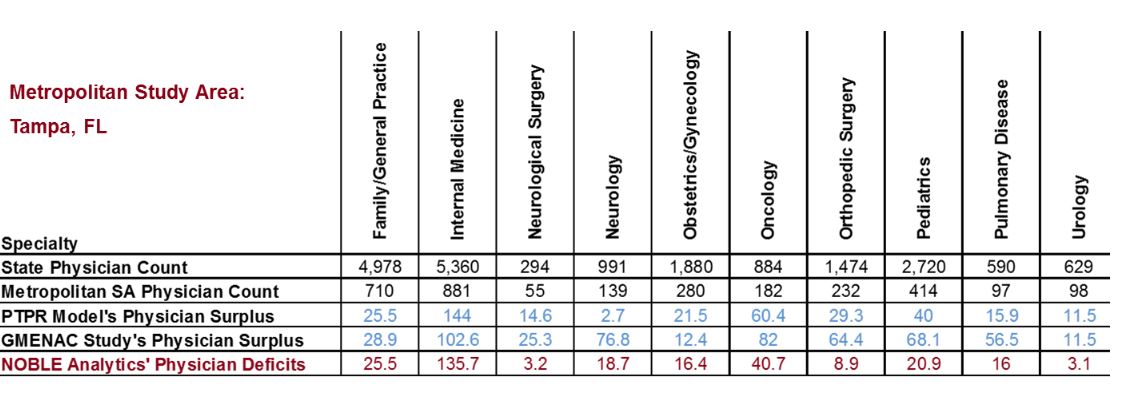However, it may not be the process of conducting the analysis that causes the most exasperation, but the results of the analysis that are truly the reason healthcare executives are frustrated. Why? Most of today’s physician-needs-analysis use the outdated physician-to-population ratio model and Graduate Medical Education National Advisory Committee studies that do not keep up with today’s healthcare practices. Unfortunately, these methodologies do not always facilitate healthcare leaders across the nation by offering the choice of recruiting for employment or independent physicians into their communities.
Brentwood, TN-based Noble Analytics & Consulting has recently introduced a new patent-pending algorithm that offers a more refined physician needs analysis for healthcare leaders. By understanding the physician activity levels allows executives to see opportunities to recruit that simply were not available in the current needs models. Since current models pay more attention to the presence of physicians, many communities can go underserved, due to the lack of choices in recruiting physicians for many hospitals.
Noble Analytics & Consulting believes the popular archaic methods used to assess a community’s healthcare needs are highly inadequate. First, physicians often have multiple office locations, thus making it difficult to determine how often a physician is serving inside a specific community. Next, individual physicians will work more or less than an average rate based on personal reasons not related to the health needs of a community (i.e. research work, nearing retirement, etc.). In addition, the simple physician-to-population ratio models ignore that healthcare needs can vary greatly between different communities based on multiple factors, including the average age of the population and other socioeconomic variances. Finally, the standard approach does not account for people easily migrating into and out of a specific community when seeking care.
In a recently posted four part whitepaper series, Noble Analytics & Consulting showed how many of the healthcare leaders have lacked choices in determining how to fill the needs of their communities. By looking at three metropolitan cities and choosing ten of the top twenty specialties mostly targeted for physician recruitment, the firm showed large discrepancies in a comparison model of the different techniques. Below is one of the three metropolitan cities and the comparison of these different models.
As the comparison model shows, many of these specialties that forced healthcare leaders to employ these specialty physicians or simply do without, now can have a third option in servicing the needs of their communities. Focusing on the amount of healthcare that is delivered in a community instead of simply the number of people who live there can correct for all of the problems referenced between these models.
The views, opinions and positions expressed within these guest posts are those of the author alone and do not represent those of Becker’s Hospital Review/Becker’s Healthcare. The accuracy, completeness and validity of any statements made within this article are not guaranteed. We accept no liability for any errors, omissions or representations. The copyright of this content belongs to the author and any liability with regards to infringement of intellectual property rights remains with them.

